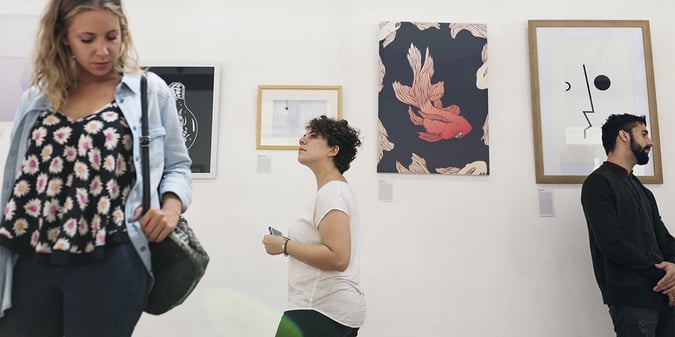
Staffing shortages are a common issue for museums. As in many nonprofit sectors, museums manage staffing shortfalls with volunteers. Volunteers can be a huge benefit to a museum because they often come with expertise and skills acquired from a lifetime of experiences.
During my work with museums I’ve seen volunteers placed in three main areas:- Administrative
- Docent
- Special Events (help the day of)
Volunteers are valuable in these areas, but for everyone’s benefit I would like to challenge the way museums typically employ volunteers. I encourage museums to think beyond traditional volunteer roles and be open to opportunities that are rewarding to both the volunteer and the museum.
To support this quick exercise in challenging the traditional museum volunteer mindset please print out your museum’s organizational chart with the departments identified.
- Highlight the departments that need more staff or could do more with additional staff. It’s OK if you highlight all of the departments. It’s often the case that every department could accomplish more with an increase in staff.
- For each department list 3 ways a volunteer can aid the existing staff in meeting department goals. Challenge any impulse that says only an expert can help. Museums have experts in each department who can guide volunteers.
- For each department idea (there should be at least 3 each), list the top 5 skills or knowledge necessary for a volunteer to assist.
- For each skill and knowledge piece identified write a quick “A” or “T” next to them. “A” is for acquired with and “T” is for trainable. This identifies whether a department needs to acquire a volunteer with the identified skill or knowledge piece, or if the skill or knowledge piece can be trained.
Now you have a roadmap for where volunteers can be used. For volunteer needs with an “A” for acquired with skills and knowledge, museums can assess existing volunteers or seek out new volunteers who meet the need. For volunteer needs with a “T” for trainable, the museum can assign interested volunteers to areas where they’ll learn new skills. It’s not an overnight process, but it is a strategic and sustainable way to apply volunteers to the greatest extent possible.
I believe complex projects can be conducted by volunteers who are consistent and work at least one shift a week. In my experience museum volunteers are well known for their commitment to their volunteer duties. They often volunteer for at least one shift a week and are very dependable. If that’s not been your museum’s experience then I recommend the museum evaluate the expectations set with volunteers when they begin.
In order for a volunteer to be successful at any project two things need to be provided by the museum:
- Clear guidelines and expectations for the project expressed orally and visually
- Consistent and easy to follow training and instructions
By communicating expectations and project guidelines up front the museum can prevent mistakes. With consistent and thoughtful training volunteers can confidently work on their own and be mostly self-sufficient in their work. Both of these items ensure project success while minimizing labor placed upon staff to train and manage volunteers.
If you’re still stumped by what to do with volunteers, I recommend you ask them. Volunteers have chosen your museum for a reason. There’s something about your museum that resonates with them. By engaging volunteers in activities they find rewarding, you strengthen their commitment to the museum.
If this practice of implementing volunteers across museum departments is new or uncomfortable I recommend you select 1-2 ideas to begin as a pilot project. Give the pilot a few months to get started and re-assess. What’s going well? What were the learning curves? How can you apply this idea to other areas? And don’t forget to ask your volunteers what worked for them!
Have fun engaging volunteers in new areas!


